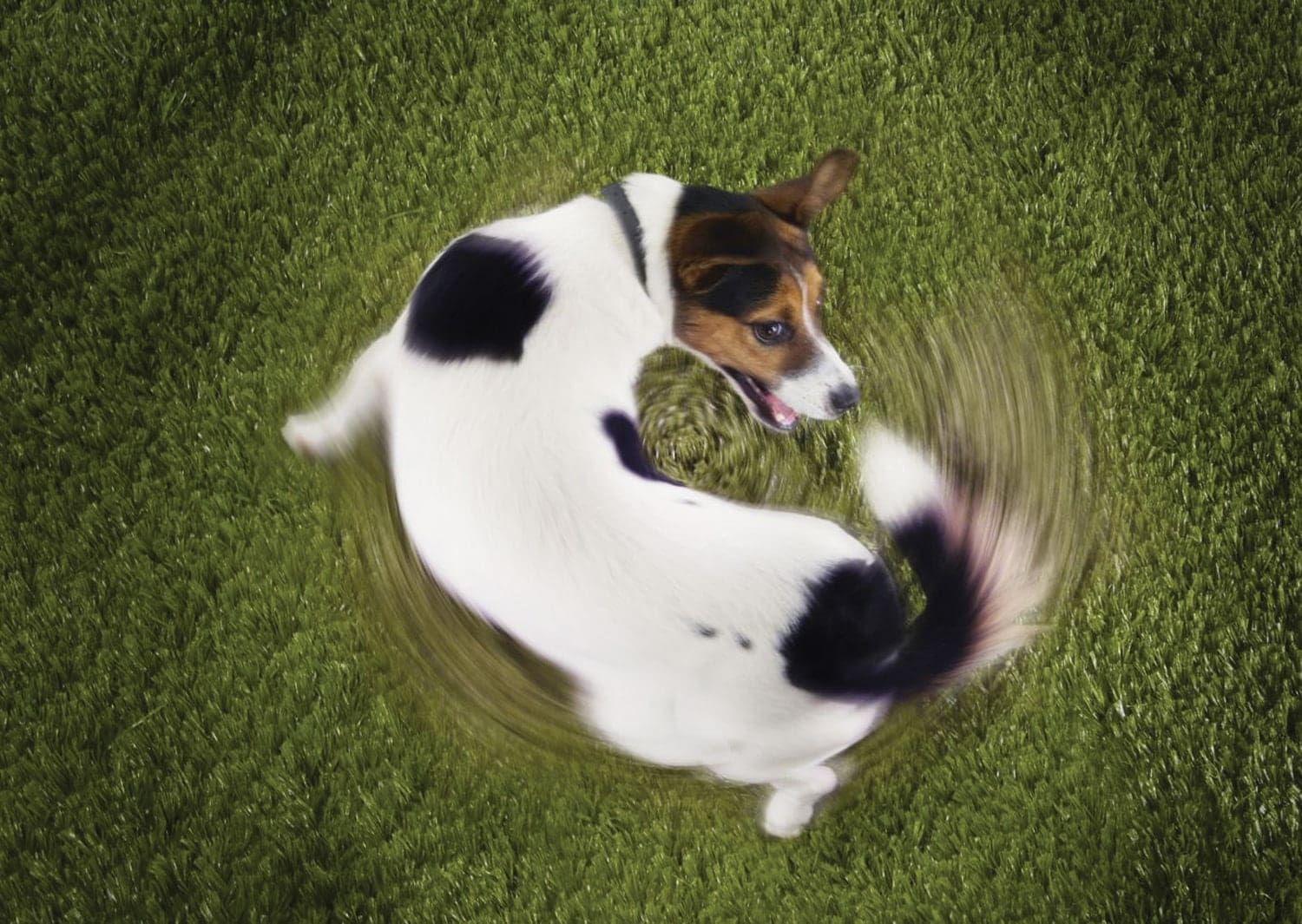Is your dog all in a spin? Why your pooch may chase it's tail

As well as being entertaining, a wide range of common canine behaviours can also be rather hard to understand to people, even if they make total sense to our dogs-and one of these behaviours that often makes us laugh but can also be somewhat confusing is when you see a dog chasing its own tail!
If your dog is apt to spin in circles until they fall over, or even occasionally manage to catch their own tail, it has probably crossed your mind to wonder why they are doing it, and if it is normal! In this article, we will set out to answer this question, by sharing a range of common explanations for why some dogs are apt to chase their tails.
Compulsive behaviours
A dog that is apt to display any peculiar or unusual behaviour and continue to do so regularly or obsessively may be exhibiting the beginnings of a compulsion, which can soon become an obsessive act that the dog will use to ease stress, find something to do, or use to get attention.
If your dog has a happy, fulfilled life and is not exhibiting any other behavioural issues, and also, is getting enough exercise, tail-chasing as a standalone issue is unlikely to be a true compulsion.
Problems with the anal glands
If your dog is always licking or trying to fiddle with their back end and particularly if they are apt to 'scoot' along the ground on their bums, pulling themselves along with their front legs, they may be suffering with problems with their anal glands.
If they have an impaction, infection or other issue, their rear ends are apt to be rather uncomfortable, and so the tail-chasing may be less about the tail and more about a general discomfort with the rear end.
Worms
One common canine problem that often displays the same symptoms as an anal gland impaction is worms, and if your dog has a high intestinal worm count, their back ends may be rather sore and itchy. This too can lead to tail-chasing, as your dog seeks to relieve the itch.
Other issues with the back end
Any other problem with the dog’s back end or the tail itself can lead to an obsessive preoccupation with that general area, which may manifest as tail chasing. Consider issues such as an injury or problem with the tail itself, or even joint or nerve problems in the lower part of the dog’s spine.
I caught a glimpse…
If your dog’s tail is just the right length that they can catch a glimpse of it out of the corner of their eye but not clearly identify what it is that they are seeing, tail chasing may be as simple as an attempt to catch that pesky thing that seems to keep following them!
If your dog seems to find some entertainment in running in circles after their tails and looks incredibly confused if they do actually manage to catch the end of it, this may be the reason!
Boredom
A dog that is bored and either not receiving enough exercise or enough stimulus will likely turn to the things that they have at their disposal to entertain themselves with, and tail chasing may be one of these things!
It is important to ensure that your dog gets plenty of exercise and has other things to occupy themselves with when they are alone, as tail-chasing can soon turn into a compulsion if all of their needs are not being met in other ways.
Neurological disorders
Certain neurological conditions can lead to dogs acting out in a wide range of unusual ways, many of which will appear highly compulsive and habitual. Certain conditions such as epilepsy, brain injury and anything else that affects the brain and neurological synapses and nerves can lead to odd behaviour, which may include chasing their own tail.
Reinforced behaviours
Finally, some dogs will chase their own tails because they have been taught to do so, and know that showing off will get them attention! If your dog has been taught to spin on the spot or even to chase their own tail deliberately, they may do so at other times to entertain themselves with, or to try to get a reaction out of their handlers!
If the tail chasing gets a response (even if it is a negative one) this will reinforce the activity in your dog’s mind, and they may exhibit the same behaviour any time that they want you to look at them!
(Article Source - Pets 4 Homes)




